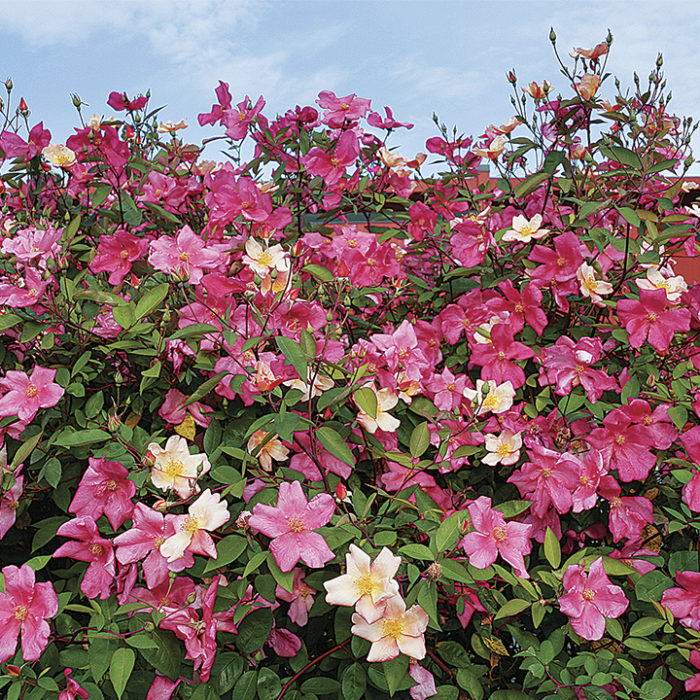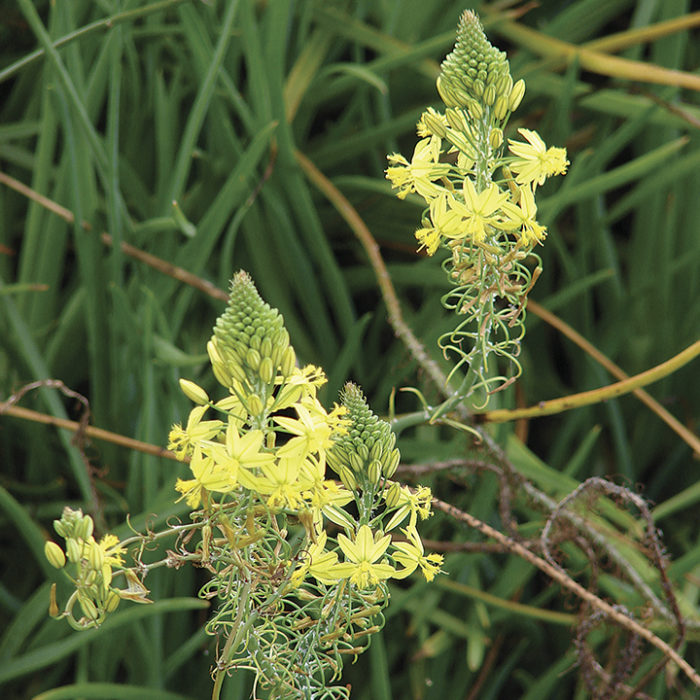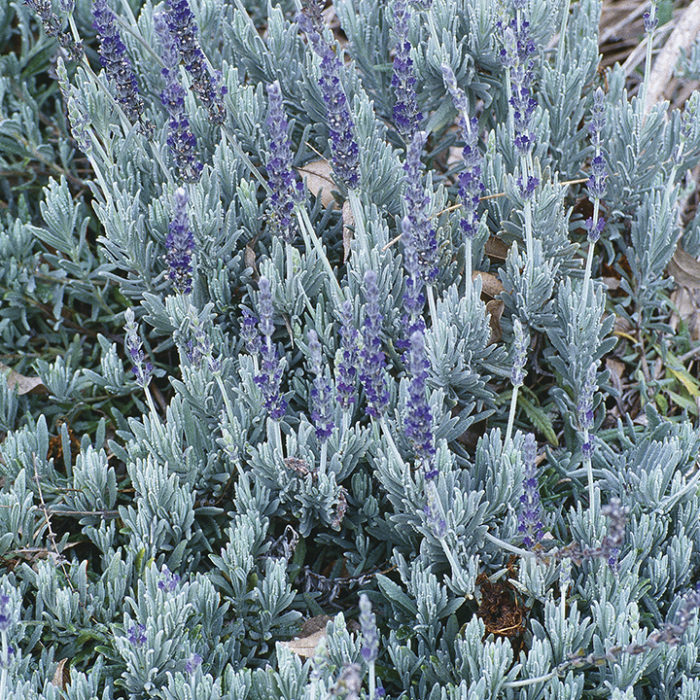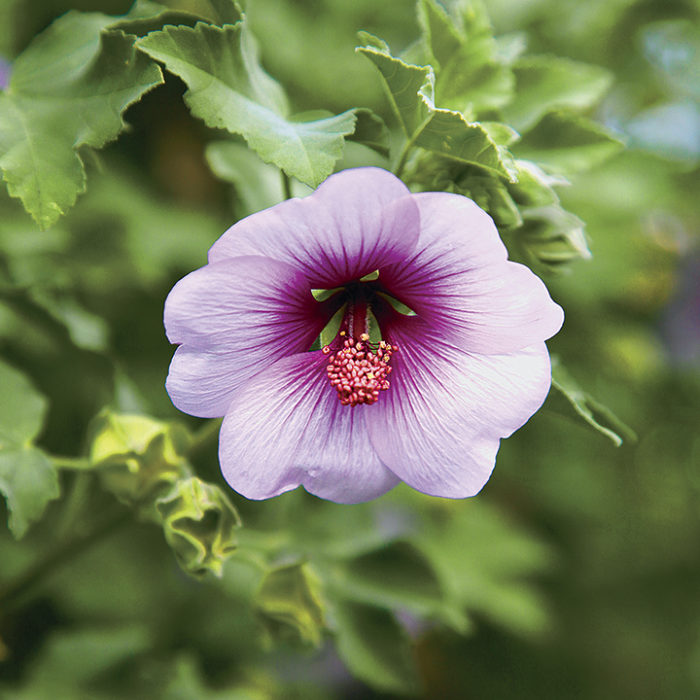1. Butterfly Rose

Name: Rosa ‘Mutabilis’
USDA Hardiness Zones: 6 to 9
Size: 6 feet tall and wide
Conditions: Full sun; tolerates a spectrum of soils
Classified as an “Old Rose,” this cultivar is one of the first two roses to reach Europe (in the 1800s) from China and was used in creating subsequent hybrids to introduce the character of repeat bloom. The showy, new bronze-to-reddish foliage is smothered in spring with large, single-petal flowers that change from creamy yellow to orange and finally dark pink, all present on the plant simultaneously, making a spectacular display. Disease-free and vigorous, it can be left natural to create a background plant for a large garden or in a smaller garden can be severely pruned in winter to control size.
2. Cape Balsam

Name: Bulbine frutescens
Zones: 9 to 11
Size: 2 feet tall and 3 to 4 feet wide
Conditions: Sun or afternoon shade; adaptable to sandy or clay soils, as long as soil drains in winter
This easy-care evergreen perennial is heat tolerant and doesn’t require much water. Its long period of bloom—March through June—will be even longer, however, with some irrigation. Fleshy, narrow, apple green leaves produce abundant spikes of yellow flowers with fuzzy stamens, creating a showy mass of color. This plant spreads by branching, with the side branches forming roots in cool winter months. The rooted branches can be easily detached and planted directly in soil to create new plants. After the heat of summer is past, Cape balsam will rebloom with the onset of cooler weather. Dependable in California’s hot interior climate, Cape balsam is reported to bloom year-round in milder coastal areas.
3. ‘Goodwin Creek Grey’ Lavender

Name: Lavandula ginginsii ‘Goodwin Creek Grey’
Zones: 7 to 9
Size: 3 feet tall and 4 feet wide
Conditions: Full sun to partial shade; well-drained soil, but tolerant of clay loam soils
While many lavenders perform well in northern California’s dry summers, this hybrid lavender is the most adaptable and vigorous of the many varieties we have tried. The dense, gray foliage is evergreen and throughout spring and summer produces fragrant wands of small, dark purple flowers beloved by pollinators for their abundant nectar. It blooms well in full sun or partial shade and, unlike other lavenders, can be pruned to shape whenever you have time. ‘Goodwin Creek Grey’ can be used to provide evergreen foliage, and a silvery form useful as a background for herbaceous perennials and bulbs.
4. Tree Mallow

Name: Lavatera maritima
Zones: 9 to 11
Size: 6 to 8 feet tall and 8 to 12 feet wide
Conditions: Full sun or partial shade; dry to average, well-drained soil
A somewhat tender plant (hardy to 20°F) with silky, gray foliage and lobed leaves somewhat like a maple, tree mallow is prized for its rapid growth and nearly ever-present flowers. The beautiful Hibiscus-type flowers are a soft pink with a dark pink center up to 3 inches in diameter and produced all over the plant. Use it for background and along fences with slower-growing, more permanent species to provide instant gratification for the gardener and resident hummingbirds. Prune annually to increase branching and strengthen the plant’s structure. Be aware that this large plant lives only about five years.
Ellen Zagory is director of public horticulture at the University of California-Davis Arboretum.
Photos: (1 and 4), Joshua McCullough; (2 and 3), millettephotomedia.com

















Comments
Log in or create an account to post a comment.
Sign up Log in